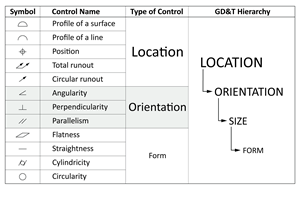Heiligenstädter Reißverschluß’s Head of Technical Development Bernd Kellner uses Pictures by PC CAD/CAM Software from Schotte Systeme to design and manufacture the PK0 zipper tooling.
Photo Credit: Heiligenstädter Reißverschluß
The 100 employees of Heiligenstädter Reißverschluß GmbH & Co. KG develop and produce zippers for clothing, upholstered furniture, outdoor equipment in flame-retardant water-repellent and UV-absorbing designs. The company uses Pictures by PC universal CAD/CAM from German software developer Schott Systeme GmbH as their central product development and production system to accelerate product innovation, including mold tool and electrode design and machining.
Pictures by PC is a cost-effective, complete CAD/CAM and IT software package for design, construction, CNC manufacturing and technical documentation. Technical Development Bernd Kellner explains, “From planning to toolmaking to molding, we rely on one single software solution. The open system structure and the wide range of well-thought-out 3D modeling possibilities offer great advantages during design. In particular, the addition of sketches and photos and the import of external files leave nothing to be desired.”
Innovation in Plastic Staple Zippers
PK0 plastic staple zippers are the smallest zippers that the company develops for baby and children’s clothing. The teeth injected directly onto the surrounding textile tape are made from Polyoxymethylene POM plastics for extreme durability and flexibility. In addition, since it is made of plastic, it offers an infinite range of color combinations from the strap to staple color, including novel glow-in-the-dark variants.
Even using the latest CAD/CAM, the entire design and development process for the PKO series still took 18 months. The zipper must meet demanding standards and the transverse strength is significant. Here the zipper has to withstand a force of 200 Newtons over a length of 1 inch. The final production mold includes a clever sliding section that can be interactively swapped to shape either the zipper start, middle and end sections, allowing for continuous molding regardless of zipper length (see Figure 1).

This injection mold for the PK0 plastic staple zippers were designed and machined with Pictures by PC.
Precision Mold and Electrode Machining
With products becoming increasingly complex, such as the PK0 zipper, the advanced machining strategies from Schott, such as trochoidal high-performance cutting (HPC) and high-speed finishing (HSC), are essential for the optimal cutting of hard tool steels and copper electrodes.
“Without good CAD/CAM software such as with Pictures by PC, the ever more complex construction and moldmaking processes are no longer possible,” Kellner says. As a result, the PK0 zipper has a very high level of precision (see Figure 2). Each tooth is 2 mm wide, 3 mm long and 2.4 mm high. The smallest corner radius on the tooth is a tiny 0.1 mm, with the gap between the cramps being approx. 0.9 mm. Using the milling strategies, they machined precise molds and electrodes in hard materials using tools as small as 0.2mm in diameter.

This shot illustrates the precision of the electrode for the PK0 zipper mold.
One of the main strengths of the Heiligenstadt-based company is its ability to manufacture the zipper clasps and grip plates according to exact customer requirements, such as logos and lettering. The flexible handling of the personalized graphics is made easier with the 2D vector graphic tools and the import of various other graphic formats. Typesetting and manipulation also meet the highest typographical requirements. The machining of the personalized 2D customer branding directly onto the 3D molds and electrodes is facilitated by the industrial engraving and carving toolpaths.
“The seamless transition to the CAM module offers great advantages, especially when it comes to lettering. This enables us to project logos and lettering onto free-form surfaces without any problems and thus mill and engrave the electrodes for die-sinking of the mold inserts. In addition, a great advantage of the CAM module is the many machining strategies that are available as standard,” Kellner says.
Kellner notes the free support and the large number of standard postprocessors available from Schotte Systeme. He believes the software forms a cornerstone of the company’s success.
Related Content
It Starts With the Part: A Plastic Part Checklist Ensures Good Mold Design
All successful mold build projects start with examining the part to be molded to ensure it is moldable and will meet the customers' production objectives.
Read MoreThree Good Reasons to Switch from Three- to Five-Axis Machining in Moldmaking
Five-axis machining technology is a great tool in the moldmaker toolbox.
Read MoreWhat Is Scientific Maintenance? Part 1
Part one of this three-part series explains how to create a scientific maintenance plan based on a toolroom’s current data collection and usage.
Read MoreTolerancing in Mold Design, Part 2: Using GD&T to Address Conventional Tolerancing Issues
Mold designers can achieve a single interpretation of workpiece functionality when following the American Society of Mechanical Engineers Geometric Dimensioning and Tolerancing standard.
Read MoreRead Next
How to Use Continuing Education to Remain Competitive in Moldmaking
Continued training helps moldmakers make tooling decisions and properly use the latest cutting tool to efficiently machine high-quality molds.
Read MoreReasons to Use Fiber Lasers for Mold Cleaning
Fiber lasers offer a simplicity, speed, control and portability, minimizing mold cleaning risks.
Read MoreHow to Use Strategic Planning Tools, Data to Manage the Human Side of Business
Q&A with Marion Wells, MMT EAB member and founder of Human Asset Management.
Read More























.jpg;maxWidth=970;quality=90)